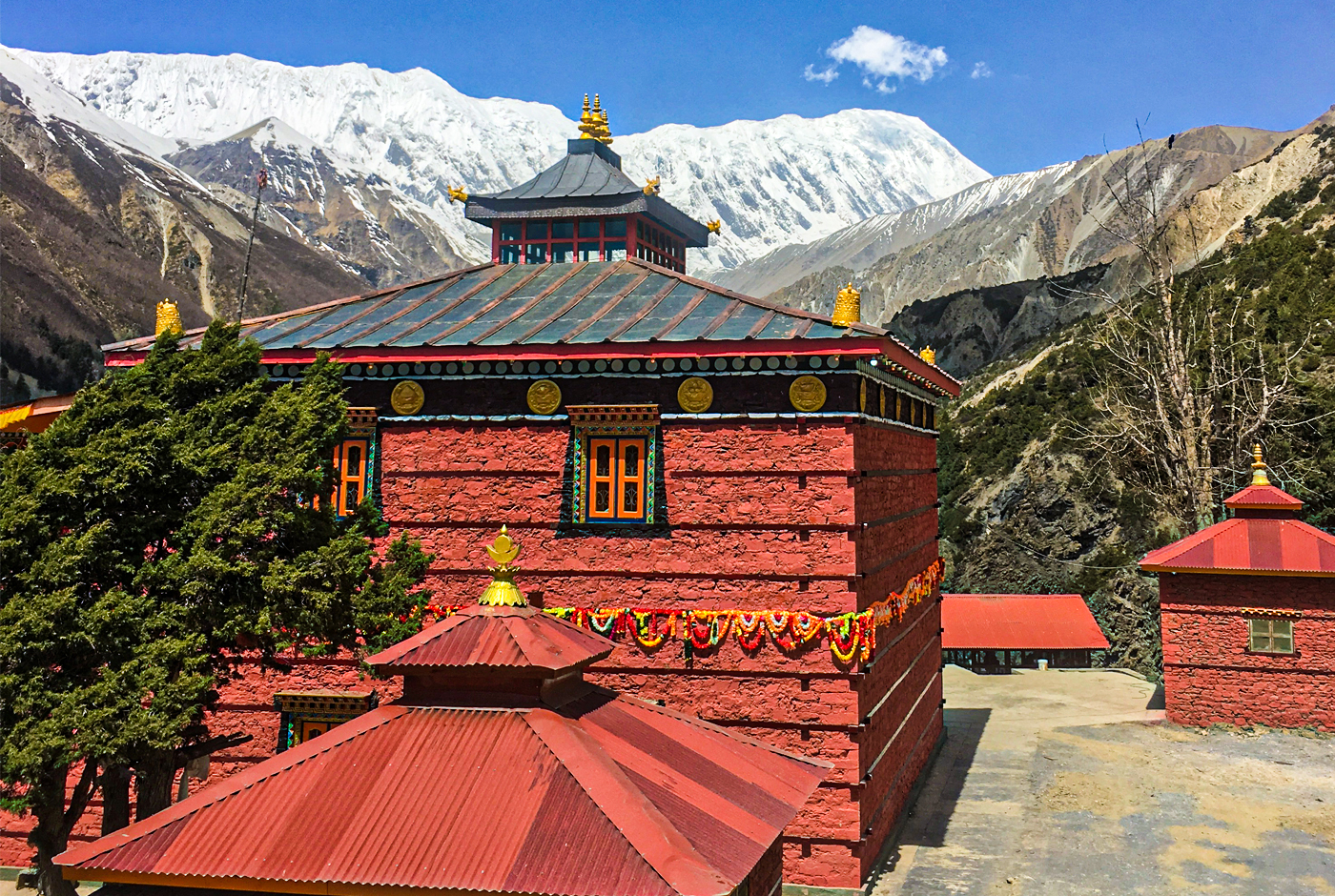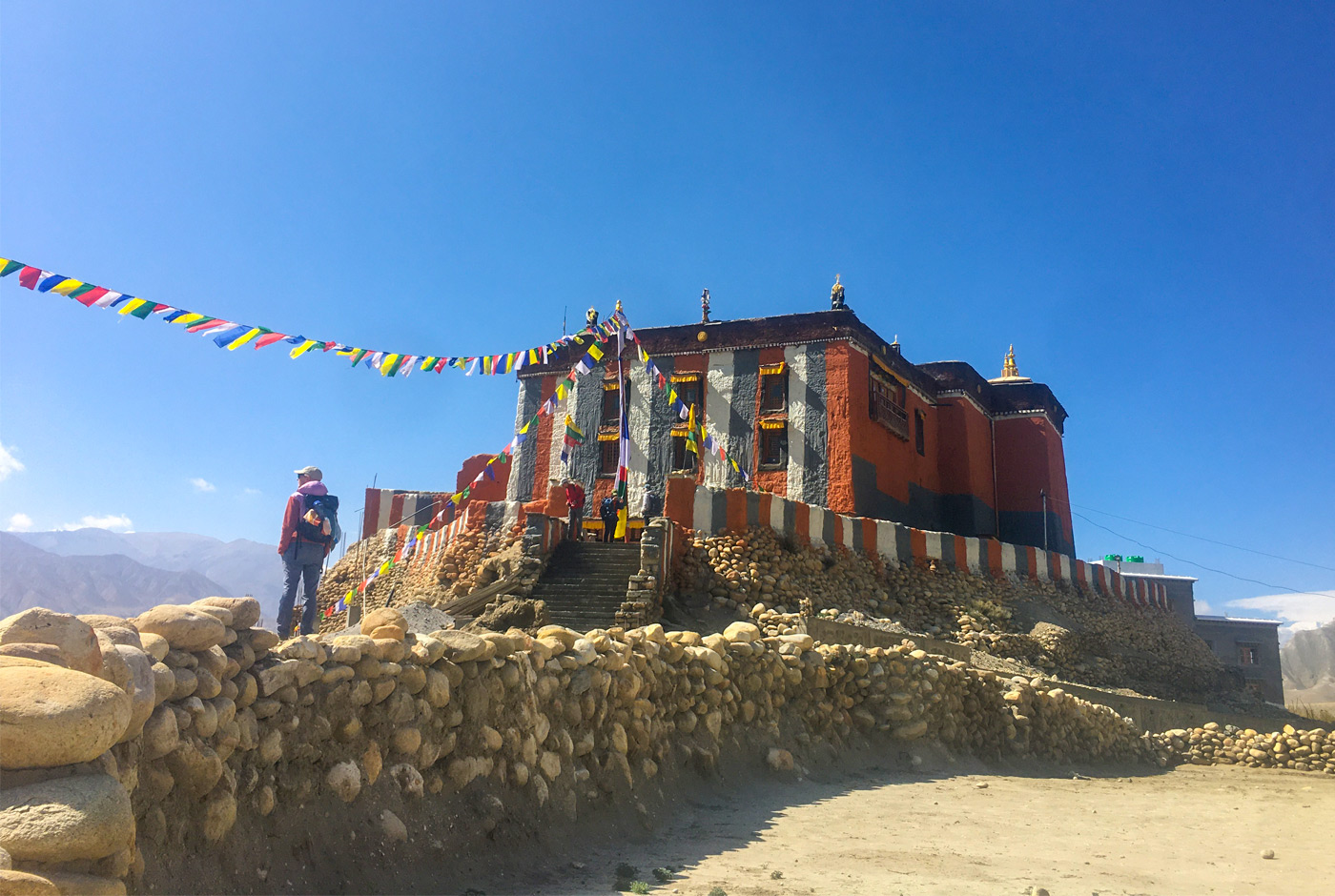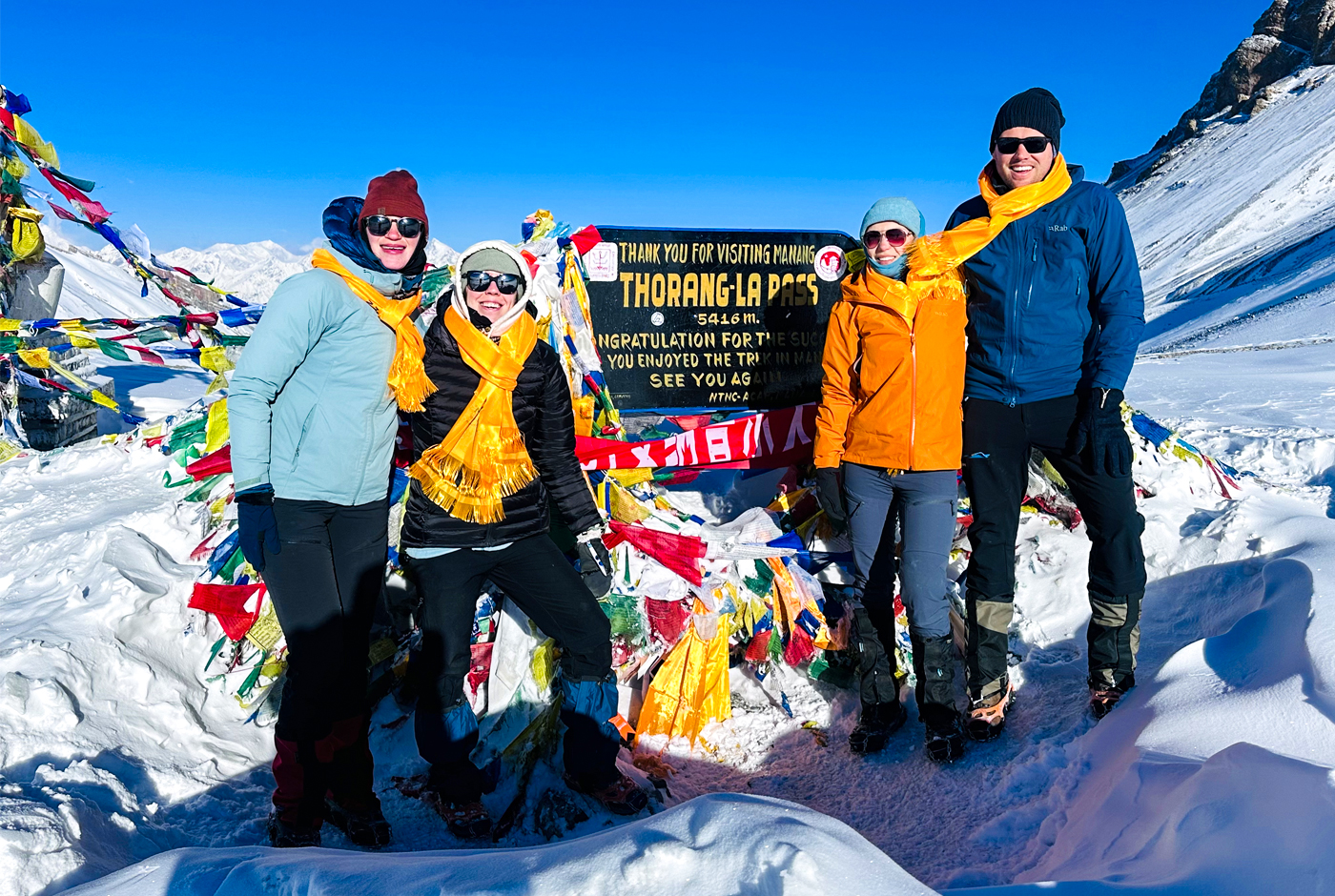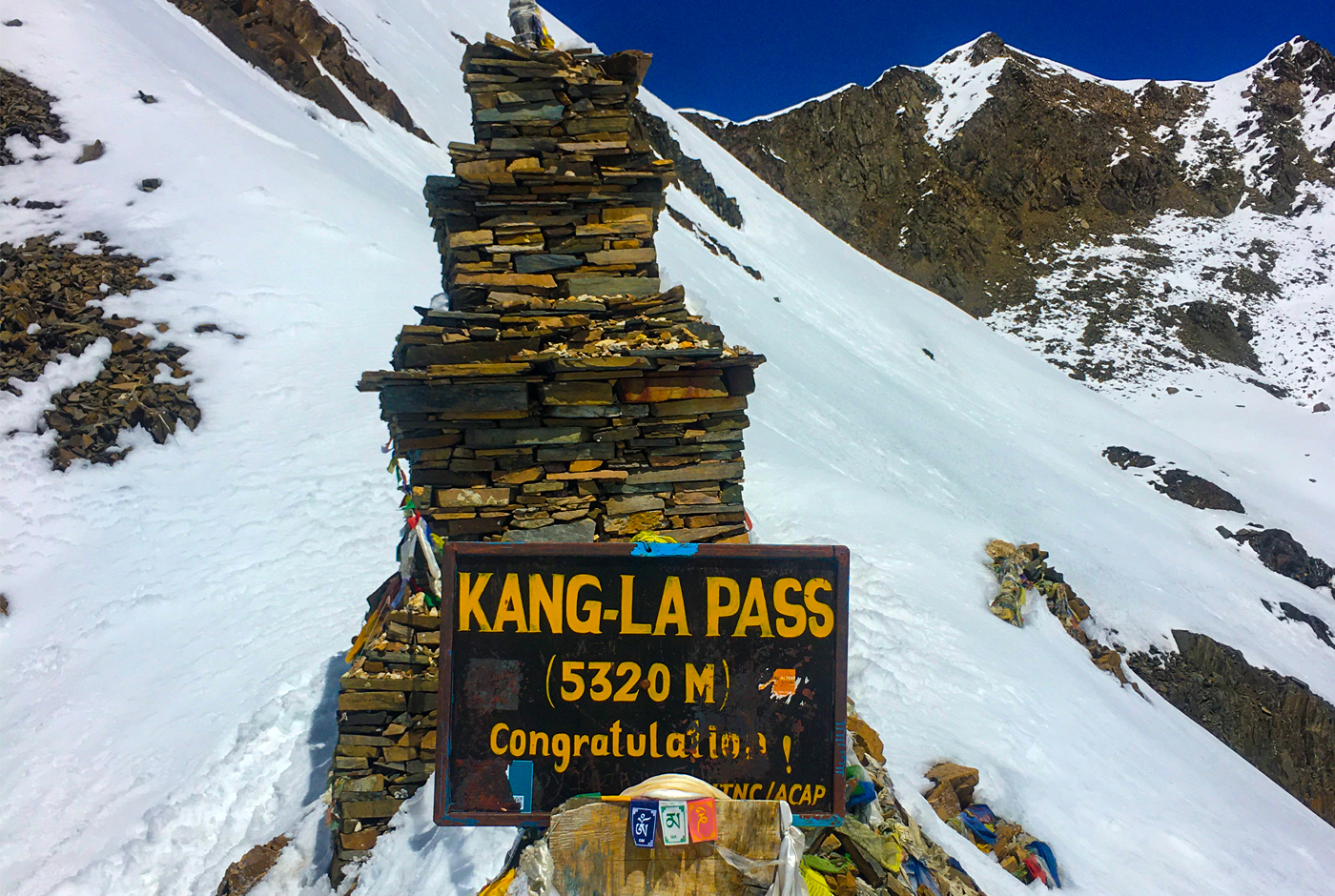Nar Phu Valley is the hidden jewel of Nepal Himalaya. Located in the Annapurna Region, close to the Tibet border, this area is one of the last pristine and untouched Himalayan valleys. The villages dotting this valley are inhabited by descendants of Khampa warriors who migrated from Tibet years ago.
Living in isolation with not much contact with the outside world, the villagers of Nar and Phu have preserved their Tibetan heritage and culture. A protected zone, this region was opened for tourists only in the year 1992. Owing to its remote location only a few trekkers explore the Nar Phu Valley each year.
Lying off the beaten path, the trail to Nar Phu is filled with spectacular and rugged views of snow-covered peaks and barren cliffs. The trail meanders past river gorges and canyons. Flanked by the Annapurna Range, Manaslu, Pisang Peak, Gangapurna, Tilicho Peak, and Api Himal, the isolated trail to Nar Phu Valley is one of the most beautiful and inspiring trails in the Nepal Himalaya.
Top Highlights
- Explore some of the last mountain villages in Nepal that have remained untouched by modernity
- The inhabitants of Nar Phu are traditionally nomads. Though some villagers have given up their nomadic lifestyle, many still follow this old way of life. During your trek, you can encounter nomadic camps or shelters, with herds of sheep or yaks. Some of the nomads still reside in tents woven out of yak hair.
- Experience Tibetan Buddhism and Bon culture. The inhabitants of Nar and Phu practice a blend of Tibetan Buddhism and Bon religion(an ancient religion pre-dating Buddhism). The valleys are dotted with huge chortens and ancient gompas (Buddhist monasteries).
- The people of Nar Phu migrated from Tibet's Kham province many years ago. There are ruins of citadels(dzongs) built by them along the route
- Visit the ancient Tashi Lakhang Gompa, which is more than three hundred years old. The gompa, which lies close to Phu Village, is one of the oldest functioning Buddhist monasteries in Nepal.
- Enjoy a diverse landscape. The trek takes you from the lush green forests of the Marshyangdi valley to the barren and arid Trans-Himalayan region. The scenery en route is filled with natural wonders - canyons, river gorges, glacial streams, snow-covered Himalayan mountains, and red and brown hills.
- Inspiring close-up views of Annapurna Massif, Gangapurna, Pisang Peak, Api Himal, Himlung, Tilicho Peak, Manaslu, Dhaulagiri, etc.
- The base camp of Himlung Himal a 7000-meter peak lies close to Phu Village.

How to reach Nar Phu Valley?
There are no roads, only walking trails leading to this valley. The nearest road is at Koto, which lies about two days’ walk from Phu village.
To reach the trailhead, you can take a ride (bus or private vehicle) to Besi Sahar from either Pokhara or Kathmandu. It takes around six hours’ drive from Kathmandu to reach Besi Sahar and from Pokhara three or four hours.
From Besi Sahar, you can board a jeep and drive to Koto. The road leading to Koto is a rough dirt track and you can expect a bumpy ride. But the scenery is awesome. Once you reach Koto, you can begin your trek.
Or you can get down at Besi Sahar and trek to Koto via Jagat taking the classic Annapurna Circuit trail.
From Koto you will have to trek through the villages of Dharamsala, Meta, and Kyang to reach Phu and thereafter the village of Nar.
Trek to Nar Phu Valley
From Koto you begin your trek and walk through a lush forest of pine and cypress trees. The trail lies high above the Nar River. Along the way, you walk past a path cut deep inside a waterfall. As you ascend to Meta, the landscape dramatically changes. While it was lush and green in Koto and Dharamshala, in Meta you are surrounded by rocky cliffs and tall mountains. The tree line vanishes and patches of stubby grass cover the ground.
At Chyakhu and Khyang you come across the ruins of the fortresses or dzongs built by the Khampa warriors after they fled from Tibet following the Chinese invasion. Following the Phu river, you come across a huge boulder standing upright. You follow the trail heading upwards and reach the village of Phu(4070m).
The entry to Phu Village is via a traditional white and red stone gate, known as kani. There are mani walls and chortens guarding the trail, and protecting the travelers from evil spirits.
Phu Village, which is made up of traditional stone houses stacked one above the other seems suspended in time. Located under the shadows of barren cliffs and lofty mountains, Phu has an old-world charm and rustic ambiance.

To reach Nar, you retrace your steps and head to Khyang again. From Kyang you take the westward trail leading to Nar Phedi. En route to Nar Village is the famous Nar Phedi Gompa. There are a lot of tiring ascents before you reach Nar, but the breathtaking views of the mountains are enough to make you forget about your aches and pains. After walking past a long mani wall decorated with blue and whit stones, you, at last, reach Nar.
Nar (3110m) is a large village dotted with traditional stone houses with carved wooden doors and windows. Colorful prayer flags flutter around the village and goats and ponies scamper around the narrow alleys together with the human inhabitants. Women sit out outside their houses and weave clothes in their traditional loom, while some spin yarn.
Nar and Phu are two villages where you can experience authentic Tibetan village life. Their remote location and difficult terrain has helped them protect their customs and traditions from outside influence and interference.
Interesting Detours
Instead of returning via the same route you can head towards the Kang La Pass (5320m) and reach Pisang via Ngawal. From Pisang, you can catch a jeep to Besi Sahar.
A more challenging route is the one leading to Thorung La Pass. After crossing the Kang La Pass you head down to Manang via Ngawal. At Manang, you can spend an extra day exploring Tilicho Lake or Ice Lake. Walking through Yak Kharka you cross the Thorung Phedi and the Thorung La Pass at 5416 meters.

Your descent will bring you to the sacred town of Muktinath, a holy Hindu and Buddhist pilgrimage site. From Muktinath, you can catch a bus or a jeep to Pokhara. Or you can walk down to Jomsom and board a flight to Pokhara from the tiny domestic airport.
Permits required to enter Nar Phu Valley
- Restricted Area Permit
- ACAP(Annapurna Conservation Area Project) Entry Permit
Since Nar and Phu lie in a protected zone, solo or independent trekking is not allowed. All tourists wishing to this valley should book their trek with a government-registered trekking agency. The trek should be led by a trained and licensed local guide and there should be at least two trekkers in the group.
Accommodation and Food
Although Nar and Phu Valley lie in a remote region of Nepal, you will find lodges and teahouses along the trail that cater to trekkers. These lodges may not be on par with those found on the EBC and ABC trails, yet they offer all the basic amenities needed to survive in the wild and isolated trail.
The lodges on the Nar-Phu Valley trail offer basic amenities – food, shelter, and electricity to charge your devices. The newly built lodges may offer modern conveniences like western toilets, hot showers, etc. But most of the teahouses are rustic and offer only basic facilities.
The menu at these teahouses may feature only a few local dishes which are nonetheless hearty and nourishing.
Difficulty and Fitness

Depending on the route you choose, your trek to the Nar Phu Valley can be moderately difficult to challenging. The crossings of the two high passes of Kang La and Thorung La require a lot of strength (both physical and mental) and stamina. The trek involves walking on a narrow gravel trail built on the side of cliffs or mountainsides. Though no technical climbing is required, there are some steep ascents and descents en route.
You need to have some experience in high-altitude trekking to trek to Nar Phu Valley. This trek is not for newbies and novice trekkers. Along with experience you need to be physically fit to complete this trek.
Final Note
Nar Phu Valley is one of the least explored trekking destinations in Nepal. Because of its remoteness and the high cost of the permit only a few trekkers choose to explore this valley each year. If you are looking for a less crowded trail and an authentic cultural experience then the Nar Phu Valley Trek won't disappoint you. You will get to explore a pristine and culturally rich area of Nepal while enjoying the raw and untouched nature.



Post a Comment